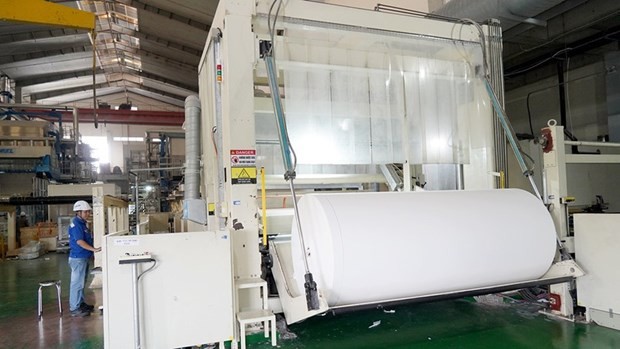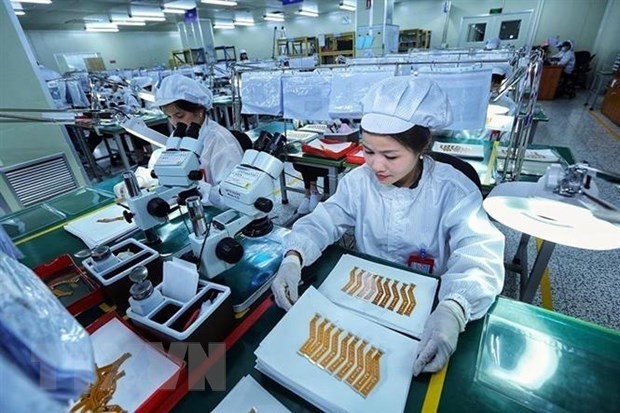Marketers must rethink campaign production to become more sustainable
There’s a gap between marketing and wider business sustainability goals – but a new report highlights what action marketers can take to bridge it.

The days of high-production campaign shoots in far-flung locations, or huge budgets dedicated to single-use brand collateral, could soon be over as marketers begin to take accountability for the environmental impact of their output.
Brands are otherwise in danger of being branded hypocritical: as companies come under increasing scrutiny to make their sustainability goals a reality – fast – marketers can no longer turn a blind eye to the amount of waste campaigns generate.
Those are the key findings of the new report, ‘Know to Grow: Sustainability in marketing production’, released by marketing production company Tag. It features insights from 15 senior marketers and procurement experts, shedding light on the sustainability challenges they are facing.
Misalignment between marketing and sustainability goals
The first part of the problem is a misalignment between marketing and a company’s wider sustainability agenda, reveals Steve Pitts, global client managing director at Tag UK.
“Marketing can be wasteful, and there’s this danger of hypocrisy; that you’ve got this group of people that are asked to sell a sustainable message to support their brands’ big, global goals, when actually they’re not always the most sustainable in their actions. A [film or photo] shoot might historically mean flying people all over the world and, say, a vehicle to South Africa, just for one day, at huge cost and carbon expense,” Pitts explains.
“Everyone wants to do the right thing and most people do their best at home with things like recycling or reducing single-use plastics, but the practical elements towards doing the right thing at work are a bit shrouded in mystery. Some of the loftiness of global sustainability targets developed by some brands makes it difficult to decipher exactly what marketers need to do, and they often don’t know what role they need to play from within their organisation.”
The challenge, as Marie Heke, international sourcing manager for The Body Shop, clarifies, is that it’s often not obvious for marketers how they can “make that seismic change to have a real impact” in their area.
But consumers want to purchase from companies “that practice what they preach”, she acknowledges. “Consumers are influencing companies through their shopping habits and changing preferences. They are demanding more from us in terms of the sourcing and sustainability of products and recycling.”
Considering a return on carbon investment
So where do marketers begin? Firstly, by reviewing the elements of their outputs to create a baseline for incremental improvements to be made, advises Pitts. He gives the example of campaign shoots and developing in-store collateral. O2, for instance, was able to reduce the carbon impact of its Christmas window store displays by 78% by using recyclable materials (see box, bottom of page).
“A lot of the time, organisations do things because that’s what they’ve always done, like always shooting in a particular location, or always creating the same 10 deliverables for an in-store campaign, without a realisation of what that’s doing to drive brand recognition or sales. So there’s an opportunity to eradicate wastage by only focusing on what’s effective,” he recommends.
“Then you can ask further questions, like, can a shoot be done with a smaller group of people? Could a shoot be managed remotely, or could potentially CGI play a part? We’ve got some great examples of shoots that have been managed by the talent themselves, and use press production smarts to make it look incredibly professional.
“Then, from the in-store marketing side of things, how can we ensure materials can be recycled at the end of use? How do we look at manufacturing location versus destination to make sure that we’re not sending things overseas unnecessarily? If you want to really make a shift, this is about planning, and considering a return on carbon investment.”
The impact of virtual production and repurposing assets
Managing creative production virtually has certainly worked well for Kevin McNair, marketing director for KP Snacks.
“I’ve got three tangible examples where we have done everything virtually, and I’m not looking at any of the creative going: ‘We missed a trick there. If only we were on the shoot, we would have done that differently.’ On the contrary, I think we’ve got some great creative,” he says.
Historically, Lloyds Banking group had filmed advertisements abroad for seasonal reasons, but as a British bank, it is now prioritising shooting in the UK for both brand authenticity and sustainability reasons, says marketing and communications director Richard Warren.
Warren is also interested in exploring how to get maximum use from existing assets by aligning with effectiveness data to understand which assets wear out more than others, he adds.
This is something Danone is already doing, as part of marketing playing a more active role in managing its own sustainability footprint, says Tom Ashby, who leads global marketing services procurement for shopper, media and digital.
“What we try to do is recycle images to create a sustainability piece straight away, which I think is very impactful,” he says.
“We on this side of the fence can be guilty of looking for solutions for just today’s problems when we should really be thinking, ‘what are tomorrow’s problems and how can I solve them now?’.”
Britvic’s chief marketing officer Matt Barwell admits “there is an awful lot of waste” in marketing, but the company has brought in “talent and experts” to better manage data to be able to track and report on campaign effectiveness.
Supporting marketers to be sustainable
Barwell feels agencies also have a role to play in helping marketer’s responsibly manage their carbon footprints.
“There is always this conflict that the agency infrastructure will want to go and create new work all the time, because it’s linked to their fee structure. It’s a bit of a human reality, isn’t it – you want to go and make something new, rather than re-skin. And how do you manage for that? It’s an interesting challenge,” he reasons.
This, says Tag’s Pitts, will prompt marketers to seek out partners that best support their sustainability goals, both from a brand and function perspective. Marketers can also follow Tag’s three step approach to achieving sustainable marketing production (see box, below).
A three step approach to sustainable marketing production
1. Diagnose and plan
Use a third-party to assess your carbon impact. Looking at your whole business from start to finish will help you identify where the opportunities lie. Setting out with a sustainable approach from the outset will help you identify waste and surface opportunities for savings.
2. Embrace innovation
Ask for regular updates from your partners about the new innovations coming every day, including details on how to access them, what the benefits will be – and don’t forget to ask about long-term cost savings.
3. Test and track
If you are trying new tech for the first time, test how it’s going before you roll out to other areas of your business – and track and measure like mad to identify what is working for you.
“Marketers will gravitate towards the organisations that make it easy for them by providing easy sustainability solutions. That might mean marketers demand that from their existing partners, or if they can’t get that, look somewhere else,” he predicts.
As part of marketers becoming more accountable for their own sustainability footprint, Pitts believes sustainability could increasingly become a KPI that is part of the pitch process, alongside creativity, innovation and cost. This is already encouraging industry players to come together to put the right sustainability solutions and metrics in place, and marketers have the chance to be at the centre of this change.
How O2 made its Christmas window displays recyclable – saving 51 tonnes of CO2
2,878 pieces of vinyl, 500 fully decorated traditional trees, 64 LED wreaths and 500 bespoke LED light frames – that’s what decorated O2’s store windows throughout Christmas in 2019. While the displays looked festive and enticing, there was one big problem – none of the components were recyclable.
For Christmas 2020, then, the brand decided it was time to make a significant change, challenging Tag to produce its first ever fully recyclable Christmas campaign.
Tag laid the groundwork by conducting extensive research and testing to identify suitable eco-materials, and a full estate window audit to reduce vinyl quantities and wastage for future campaigns.
Tag not only produced all in-store point of sale items in 100% recyclable materials, but arranged collection and recycling of these items at the end of the season. This eliminated 98% of the single use plastics previously used and saved 51 tonnes of CO2 emissions – a reduction of 78%.
Tag also created the displays with in-store staff installation in mind, saving an estimated 42,500 miles in fitter visits.
The result? The ability for all future O2 in-store campaigns to be fully recyclable, reducing the brand’s environmental impact not just at Christmas, but all year round.



 Print the article
Print the article


